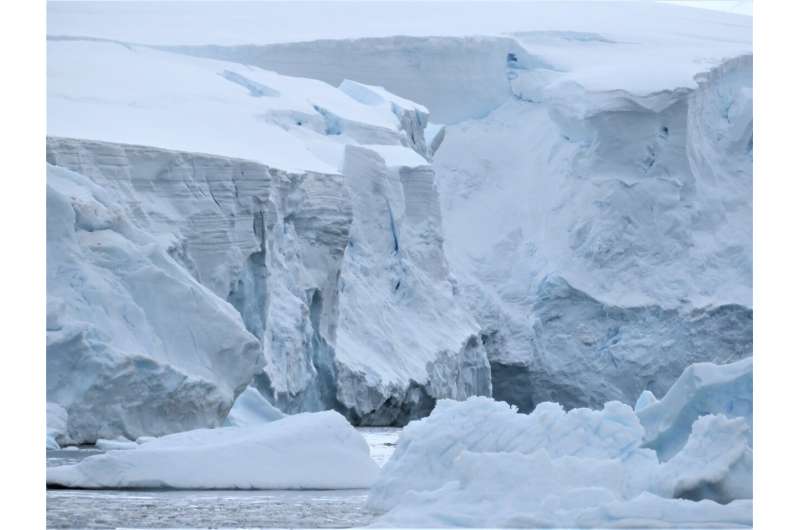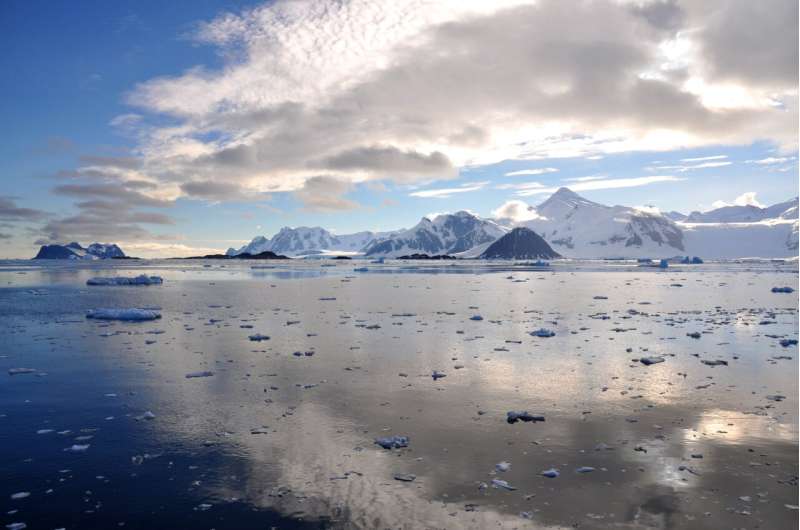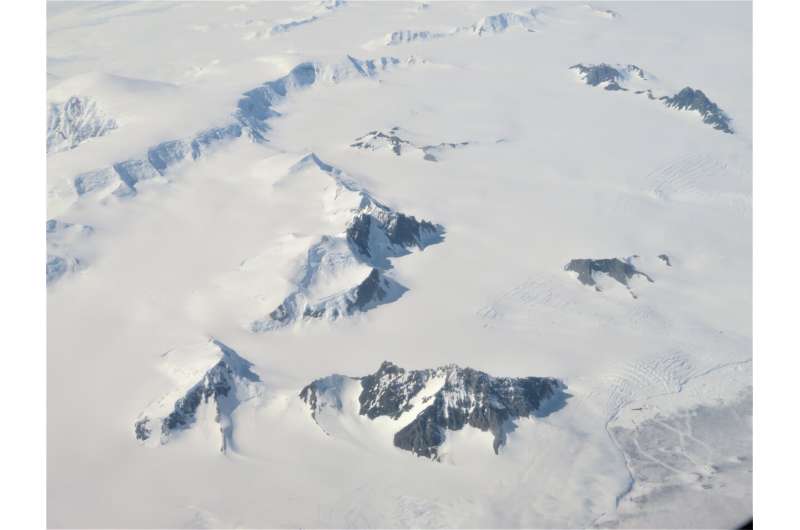The Cadman Glacier before and after the collapse of the ice pack. The image on the left was taken in 2017 and shows the sea ice. An image taken this month, right, shows the loss of sea ice. Credit: European Commission, European Space Agency, Copernicus Sentinel-2 data, Benjamin Wallis
Scientists warn that Antarctica’s seemingly stable glaciers can “tip very quickly” and lose large amounts of ice due to warming oceans.
Their discovery comes after a research team led by Benjamin Wallis, a glaciologist at the University of Leeds, used satellites to track the Cadman Glacier, which flows into Beascochea Bay on Antarctica’s West Peninsula. . The researchers published their analysis, “Ocean warming drives rapid dynamic activation of marine-terminus glaciers on the West Antarctic Peninsula,” in Natural communications.
Between November 2018 and May 2021, the glacier retreated by eight kilometers as the ice shelf at the end of the glacier, where the ice extends into the sea and is anchored to the sea floor, in the so-called grounding zone collapsed.
The ice floe would have acted as a buttress, slowing the movement of the glacier towards the sea.
Surrounded by warmer ocean waters, scientists believe the ice shelf has thinned and is no longer securely anchored, and is no longer able to hold the glacier back.
As a result, the rate at which the glacier was flowing rapidly accelerated, doubling its speed, thereby increasing the amount of ice it discharged into the sea in the form of icebergs, in a process known as calving of iceberg.

A marine glacier ending in Antarctica. The image shows Antarctica but NOT the Cadman Glacier. Credit: Professor Anna Hogg
Wallis said: “We were surprised at how quickly Cadman went from a seemingly stable glacier to one where we are seeing sudden deterioration and significant ice loss.
“What was also curious was that neighboring glaciers in this part of the West Antarctic Peninsula did not respond in the same way, which could allow us to better predict how climate change will continue to affect this region important and sensitive polar region.
“Our study brought together data from three decades, nine different satellite missions and in situ oceanographic measurements to understand the changes occurring in Antarctica. This demonstrates how important it is to have long-term monitoring of the regions Earth’s polar sensors with a range of sensors that all tell us a different part of the story.
According to scientists, the Cadman Glacier is currently in a state of “substantial dynamic imbalance”. The ice on the glacier continued to thin, with an elevation loss of about 20 meters per year. This is equivalent to a loss of height of a five-story building each year.
And about 2.16 billion tons of ice flow from the Cadman Glacier into the ocean each year.
Why Cadman Glacier Became So Unstable
Unusually high seawater temperatures in early 2018/19 around the West Antarctic Peninsula are thought to have triggered the rapid dynamic change of the Cadman Glacier system.

The mountainous and icy coastline of the Antarctic Peninsula. A marine glacier ending in Antarctica. The image shows Antarctica but NOT the Cadman Glacier. Credit: Professor Anna Hogg
By analyzing historical satellite data, scientists believe that warmer ocean waters gradually thinned the glacier’s sea ice starting in the early 2000s and possibly since the 1970s.
The warmer water was not transported to the ocean surface but deep within the water column. This warmer water may have reached the sea ice where it is anchored to the sea floor. The result is that the sea ice begins to melt from the bottom up.
In 2018/19, the sea ice was so thin that it broke away from the grounding zone and began to float, thereby slipping the anchor and allowing the Cadman Glacier to drain more ice into the seas.
But the scientific team still faced a big question. Why did Cadman Glacier collapse while neighboring Funk and Lever Glaciers remained relatively stable?
Underwater ridges protect certain glaciers
By analyzing underwater oceanographic data, they believe that a series of underwater rock structures called ridges or sills, at depths of 200 meters and 230 meters, act as a defensive barrier, preventing channels of warmer water to reach the glaciers. They warn, however, that increased ocean warming could compromise the ridges’ ability to protect some glaciers.
Professor Michael Meredith, of the British Antarctic Survey and one of the authors of the paper, said: “We have known for some time that the ocean around Antarctica is warming rapidly and that this poses a significant threat to glaciers and the ice cap. , with consequences for global sea level rise.

Mountains and glaciers of the Antarctic Peninsula from above. A marine glacier ending in Antarctica. The image shows Antarctica but NOT the Cadman Glacier. Credit: Professor Anna Hogg
“What this new research shows is that seemingly stable glaciers can tip very quickly, become unstable almost without warning, then thin and retreat very sharply. This highlights the need for a comprehensive ocean observing network around Antarctica, particularly in regions near glaciers which are particularly difficult to measure.
In their paper, the researchers say what happened to the Cadman Glacier can be seen as an example of a “glaciological tipping point,” where a system in a steady state can take one or two paths depending on a change in an environmental parameter. .
A tipping point was reached in 2018, caused by the arrival of unusually warm ocean water, which caused the ice shelf to collapse. Reaching this tipping point caused the Cadman Glacier to increase its ice flow by 28% in 13 months.
Researchers say other glaciers on the Antarctic Peninsula could be vulnerable to similar sudden changes due to underwater geology.
More information:
Benjamin Wallis, Ocean warming drives rapid dynamic activation of marine termination glaciers on the West Antarctic Peninsula, Natural communications (2023). DOI: 10.1038/s41467-023-42970-4. www.nature.com/articles/s41467-023-42970-4
Provided by the University of Leeds
Quote: Scientists track rapid retreat of Antarctic glacier (November 28, 2023) retrieved November 28, 2023 from
This document is subject to copyright. Except for fair use for private study or research purposes, no part may be reproduced without written permission. The content is provided for information only.



